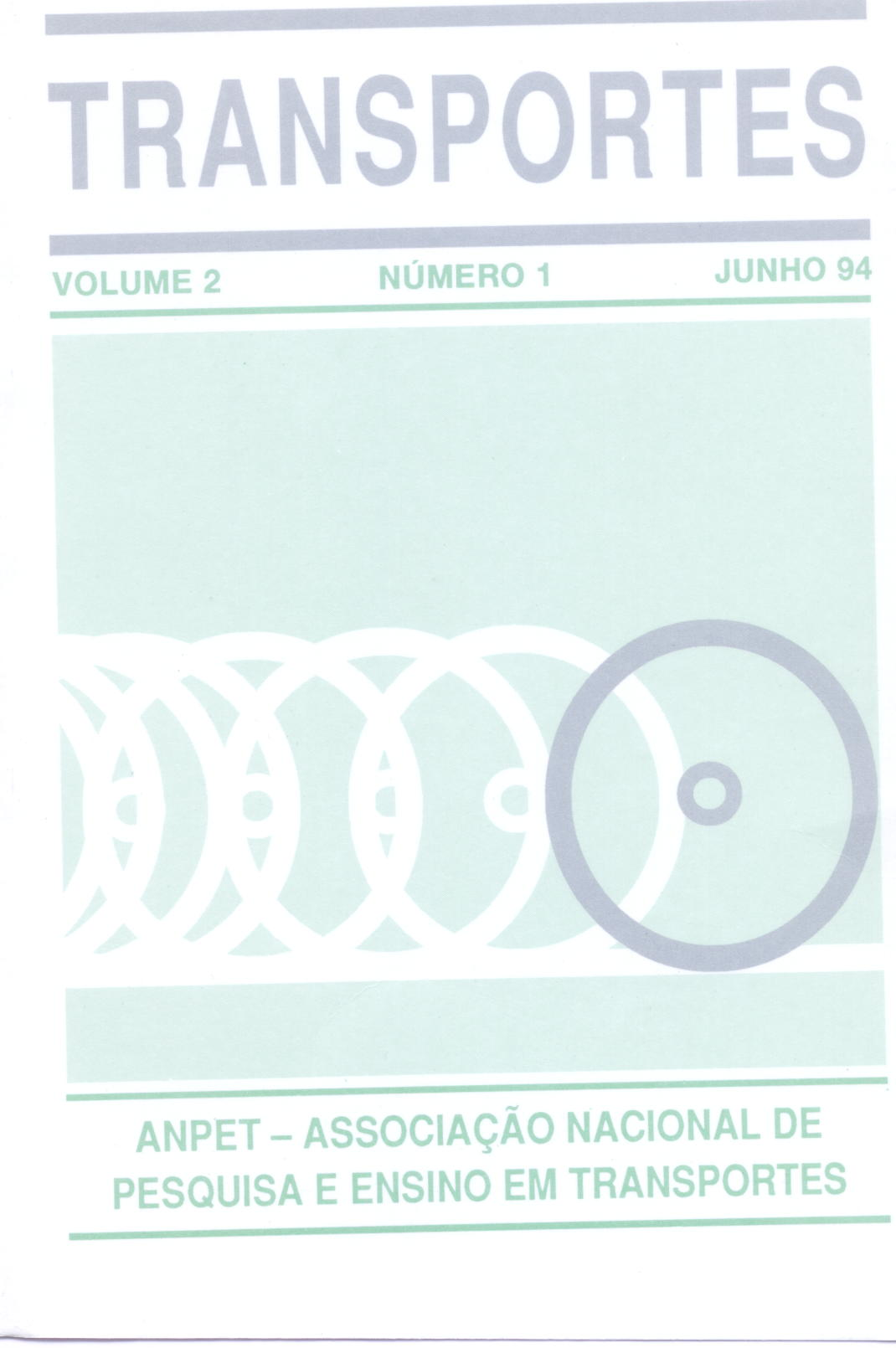PROGRAMAÇÃO SEMAFÓRICA: UMA ANÁLISE COMPARATIVA DE ALGUNS MÉTODOS
DOI:
https://doi.org/10.14295/transportes.v2i1.331Abstract
O presente trabalho faz uma análise comparativa entre os métodos desenvolvidos por Greenshields, Maecke, Gleue, Pavel, Webster e pelo Highway Capacity Manual para a programação semafórica de tempo fixo em interseções isoladas. Estes métodos são classificados em dois grupos distintos: os que consideram o conceito do Headway de Saturação como referência e aqueles que preferem adotar o do Fluxo de Saturação. Todas as etapas relevantes do processo de programação semafórica são comentadas e referenciadas a cada um dos métodos citados. Como resultado da análise comparativa verifica-se que os métodos pertencentes ao grupo do Headway de Saturação são mais adequados a nossa realidade, uma vez que suas aplicações demandam menores recursos técnicos e financeiros. Entre os métodos deste grupo, o Método de Maecke demonstrou ser o mais elaborado, principalmente no que se refere a consideração da variação do volume de trafego e do cálculo do tempo entreverdes. Quanto aos fluxos de pedestres estes são considerados de forma superficial por todos os métodos. Isso significa que nenhum deles assegura o correto atendimento da demanda dos fluxos de pedestres.
Abstract:
This paper presents a comparative analysis of the methods developed by Greenshields, Maecke, Gleue, Pavel, Webster and the Highway Capacity Manual for fixed-time traffic signal settings for single intersections. These methods were classified according to two distinct groups: the first one considers the Saturation Headway concept as the basis for calculation, the second one takes the Saturation Flow as the main reference. All relevant aspects of each method have been investigated. The results of the comparative analysis have indicated that the methods which take into account the Saturation Headway are more adequate to Brazilian operation conditions, as their use require less resources and technical support. Among the methods in this group, Maecke´s has presented the best performance since it considers variation in traffic intensity and intergreen time. The treatment of pedestrian flows is considered to be superficial in all the methods which have been analysed. That means that none of these methods can assure that pedestrian flows demand is adequately satisfied.
Downloads
Downloads
Published
How to Cite
Issue
Section
License
Authors who submit papers for publication by TRANSPORTES agree to the following terms:
- The authors retain the copyright and grant Transportes the right of first publication of the manuscript, without any financial charge, and waive any other remuneration for its publication by ANPET.
- Upon publication by Transportes, the manuscript is automatically licensed under the Creative Commons License CC BY 4.0 license. This license permits the work to be shared with proper attribution to the authors and its original publication in this journal.
- Authors are authorized to enter into additional separate contracts for the non-exclusive distribution of the version of the manuscript published in this journal (e.g., publishing in an institutional repository or as a book chapter), with recognition of the initial publication in this journal, provided that such a contract does not imply an endorsement of the content of the manuscript or the new medium by ANPET.
- Authors are permitted and encouraged to publish and distribute their work online (e.g., in institutional repositories or on their personal websites) after the editorial process is complete. As Transportes provides open access to all published issues, authors are encouraged to use links to the DOI of their article in these cases.
- Authors guarantee that they have obtained the necessary authorization from their employers for the transfer of rights under this agreement, if these employers hold any copyright over the manuscript. Additionally, authors assume all responsibility for any copyright infringements by these employers, releasing ANPET and Transportes from any responsibility in this regard.
- Authors assume full responsibility for the content of the manuscript, including the necessary and appropriate authorizations for the disclosure of collected data and obtained results, releasing ANPET and Transportes from any responsibility in this regard.











